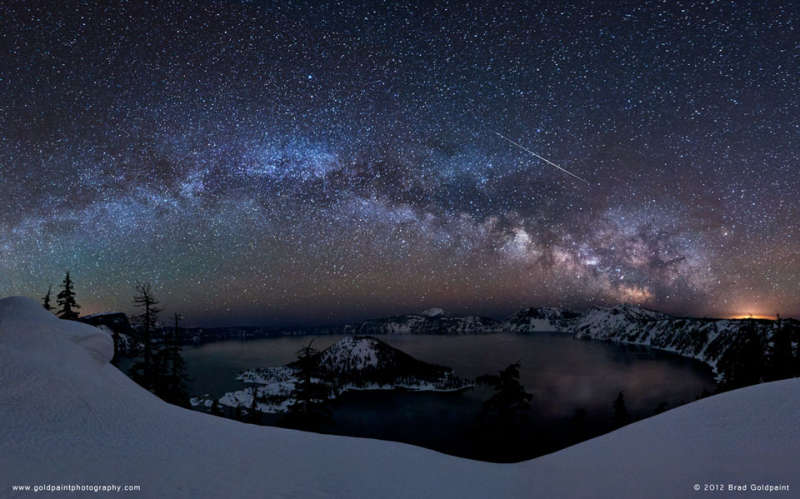Credit & Copyright: Brad Goldpaint
(Goldpaint Photography)
Explanation:
Did you see it?
One of the more common questions during a meteor shower occurs because the time it
takes for a meteor to flash is typically less than the time it takes for a head to
turn.
Possibly, though, the glory of seeing
bright meteors shoot across and
knowing that
they were once small pebbles on another world might make it all worthwhile, even
if your
observing partner(s) could not share in every particular experience.
Peaking over the past few days, a dark moonless sky allowed the
Lyrids meteor shower
to exhibit as many as 30 visible meteors per hour from some locations.
A bright Lyrid meteor streaks above picturesque
Crater Lake in
Oregon,
USA, in the
above composite of nine exposures taken last week.
Snow covers the
foreground,
while the majestic central band of our home galaxy arches well behind the serene
lake.
Other meteor showers this year include the
Perseids in mid-August and the
Leonids in mid-November, both expected to also dodge the
glare of a bright Moon in 2012.
1999 2000 2001 2002 2003 2004 2005 2006 2007 2008 2009 2010 2011 2012 2013 2014 2015 2016 2017 2018 2019 2020 2021 2022 2023 2024 2025 |
Yanvar' Fevral' Mart Aprel' Mai Iyun' Iyul' Avgust Sentyabr' Oktyabr' Noyabr' Dekabr' |
NASA Web Site Statements, Warnings, and Disclaimers
NASA Official: Jay Norris. Specific rights apply.
A service of: LHEA at NASA / GSFC
& Michigan Tech. U.
|
Publikacii s klyuchevymi slovami:
meteor - Meteor - Meteornyi potok - Liridy
Publikacii so slovami: meteor - Meteor - Meteornyi potok - Liridy | |
Sm. takzhe:
Vse publikacii na tu zhe temu >> | |
